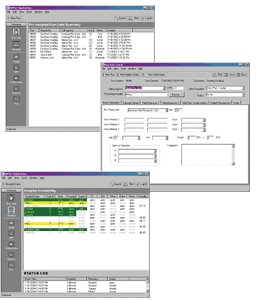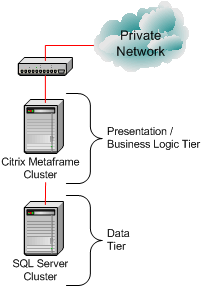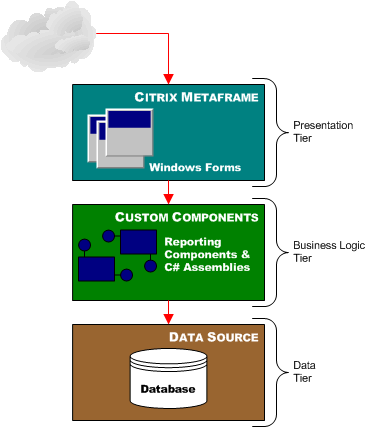- Service the needs of the emergency medical community by: collecting and storing patient information and hospital resource availability, povide a common link to all emergency receiving hospitals, trauma centers, base hospitals, SART facilities, ALS / BLS providers, the County’s Medical Examiner Office, and other desired sources.
- Provide information that will help the Emergency Medical Services to audit ongoing disease surveillance and provide these services a method of early detection of any suspected bio-terrorist event.
- Use technology to improve the way various medical services work. The application must have following attributes: the application must be designed to accommodate a growing user base (scalability), the application must be able to support any new and expanded functionality that may be required (extensiblity), the tools used to build the solution must be consistent and adhere to both industry and open standards.
Project Date: June, 2002
Client / Server Prototype

Project Goal
Project Considerations
- System should contain a certification processing function.
- System should include electronic messaging (both bulletin board and email).
- System should also offer various administrative functionality.
Project Implementation
- The system was developed using Microsoft’s .NET Framework and designed as a physical 2-tier, logical 3-tier solution (see Diagram 1). The application will reside on and be run from the Citrix server (shown in this diagram). The email and bulletin board modules can be hosted in a separate server, or may be able co-exist with the rest of the application on the Citrix server. As application usage grows, additional Citrix Metaframe servers using Citrix Load Balancing Services can be added to the environment to handle the additional load. Citrix Load Balancing Services groups multiple Citrix Metaframe servers into scalable server farms. When a user makes a request for an application, the load balancing services dynamically routes the user to the least busy server to deliver the best application performance and server resource utilization.
- The application, at a high level, is a component-based model, utilizing a logical 3-tier architecture. The following diagram (Diagram 2) illustrates the logical architecture for this application.
- Windows forms will be used as the primary user interface. The forms will communicate with the business tier components to retrieve and submit data, and provide authentication services. The forms will be written using C#. The Crystal Reports Client will provide reporting functionality.
- This business tier provided the functionality that performs specific business needs. Managing access to the database, performing field validation, and authentication services are examples of business needs that are solved with custom assemblies (or components). The assemblies will be written in C# and will be compiled within the application. This application will reside on the Citrix Metaframe server. Some of the core features addressed in this tier are: reporting functionality, email functionality, and bulletin board components.
- Although the application only consists of an executable and a database, the underlying architecture is a component-based solution. By separating out the business functionality into components, future versions of the application can be easily upgraded by adding or replacing existing components. In addition, the components can be re-used for building a web-based applications or for building web services.

